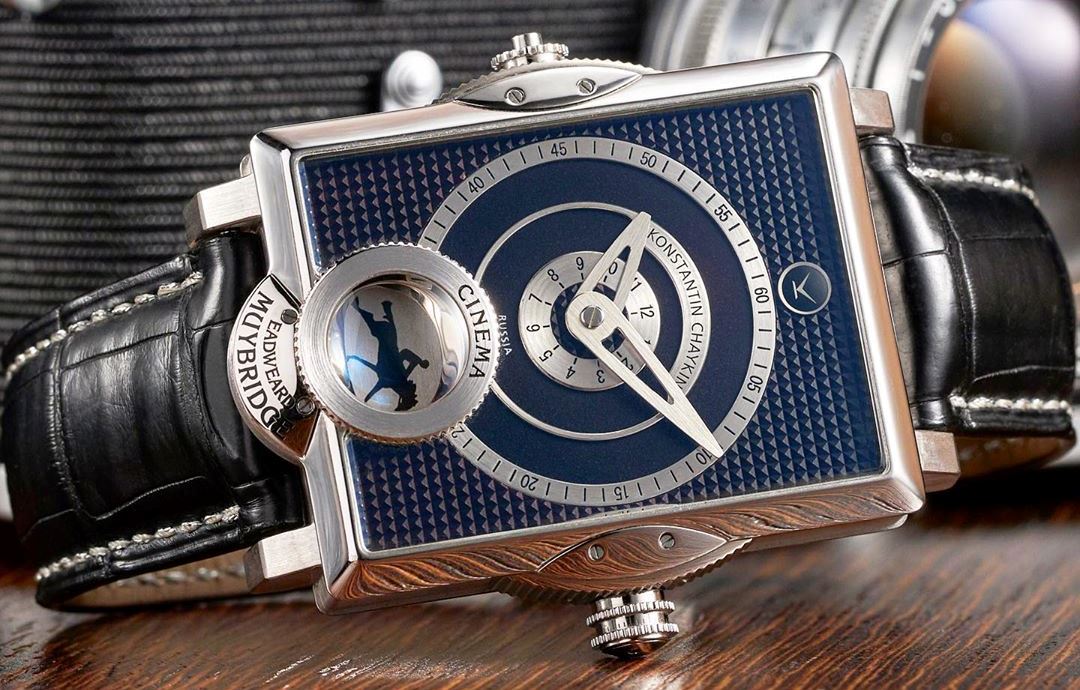It is precisely 10 years since Konstantin Chaykin was so inspired by the origins of movie making that he set out to capture it in a unique timepiece that became the Cinema watch.
The watchmaker was at his desk, using Google for the sort of search that we all carry out many times every day.
Google marks certain historic days with graphics, and on the day in question, Mr Chaykin’s attention was drawn to a representation of an early film real showing a horse and rider in motion.
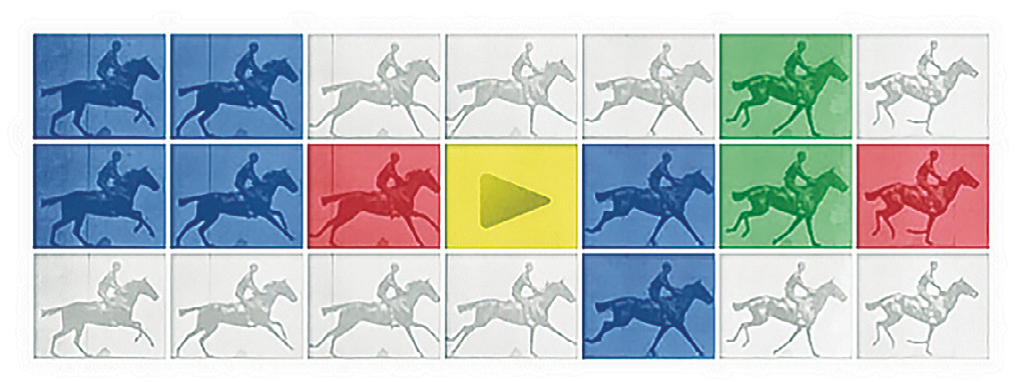
The Google Doodle, as these graphics are called, appeared on April 9, 2012, because it was the birthday of Eadweard Muybridge (1830-1904), creator of the zoopraxiscope, which turned still photographs into moving reels.
Horologists had much in common with early inventors of photography and moving picture technology but Mr Chaykin’s research discovered that no one had seriously considered incorporating the animation of the earliest cinema into a watch.
He set out to do just that using a mechanical watch movement before realising that what was truly required was to miniaturize the zoopraxiscope so that it would fit into a wearable wristwatch measuring just 47.6×37.6×13.8 mm.
Zoopraxiscope
The zoopraxiscope is actually an early type of projector. Therefore, it was used as the basis of the first kinetoscope in the history of cinematography.
Muybridge’s device played 40-cm glass discs, whereas Chaykin’s watch featured the corresponding miniature wheel — 32 mm in diameter, extremely small in comparison with the original.
The inventor remembers, “The difficulty of the task was clear to me. Therefore, anticipating all sorts of problems and traps, I decided to “conquer” the task consistently, step by step, according to a pre-calculated plan. Firstly, I built a plastic model of the animation mechanism on a larger scale, then I created a copy in metal (a 1:1 scale). Only after that could I make a prototype with a watch movement.”
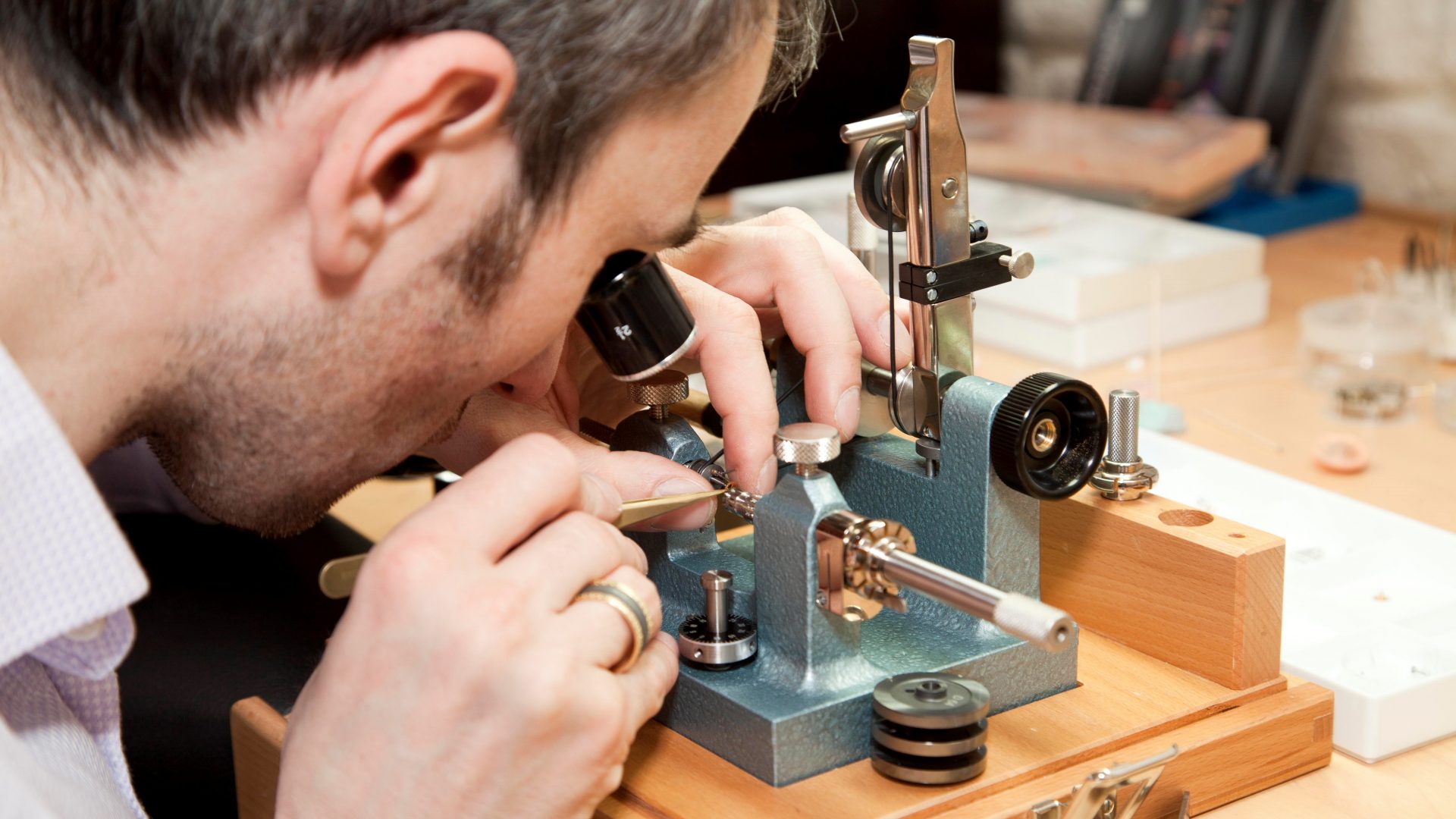
It was necessary for Mr Chaykin to regulate the speed of the rotating disk (the basis of the dial animation).
For this purpose, he initially decided to use an aerodynamic stabiliser, but later it turned out that a standard tribe with a pair of cover stones would suffice.
While designing the module, Mr Chaykin also implemented several technical solutions from the dawn years of the movie industry: the Geneva drive (initially a horological invention) and an obturator — a mechanism designed to block the light or other kinds of natural radiation in optical devices.
The watchmaker calculated and manufactured a special ocular which he placed at the bottom of the dial. Now, with a push of a special button, it cyclically reproduces Muybridge’s “Sallie Gardner” (“The Horse in Motion”) series in 12 frames.
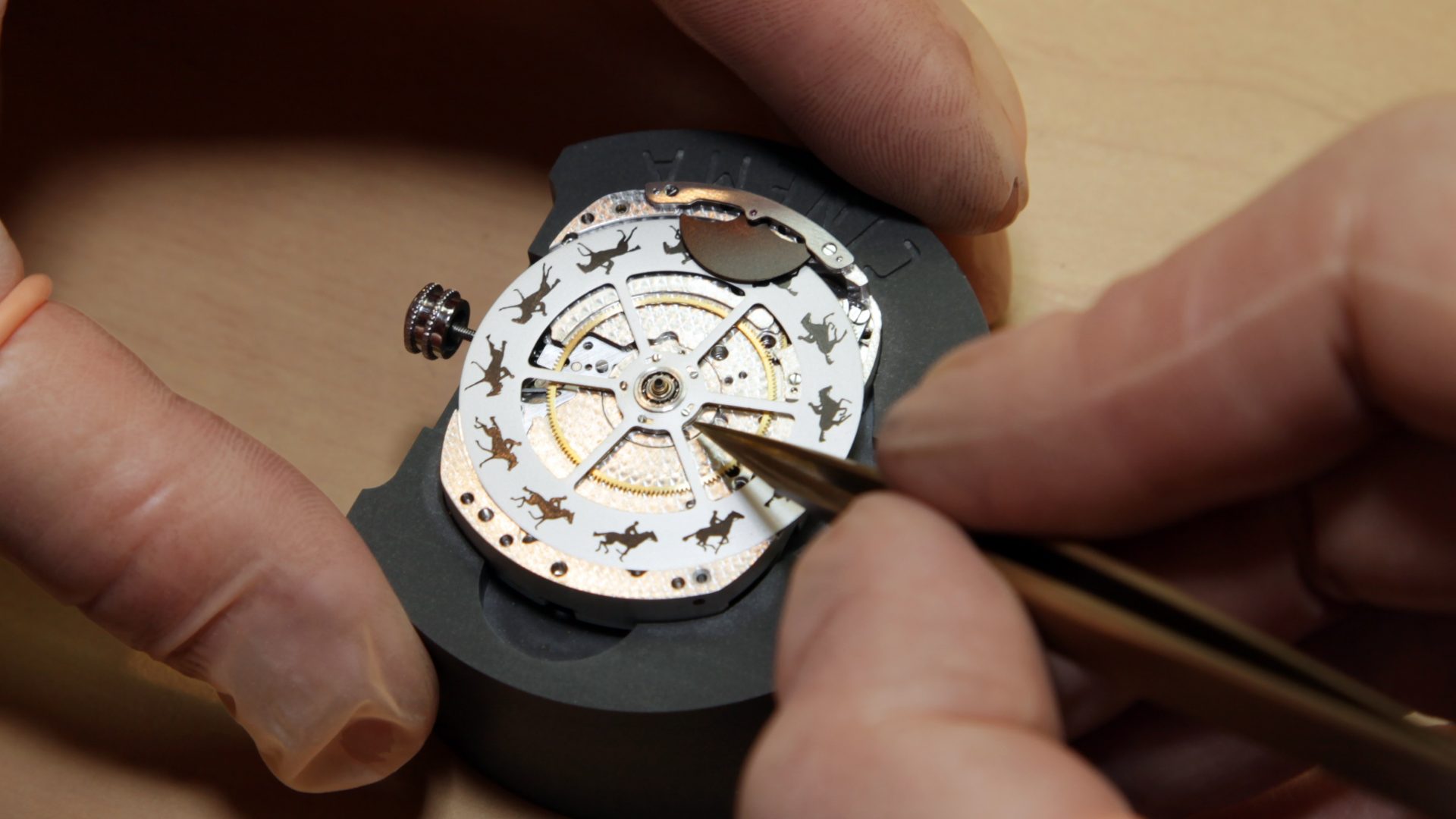
The manufactured K.06-0 caliber with manual winding has many secrets to unveil. For example, the animation device has its own winding barrel. As a result, there are two of them in one timepiece, one for the module (at the bottom) and the other one for the movement of the minute and hour hands at the top.
The momentum of Chaykin’s zoopraxiscope is uncommonly high for classical horological devices: one frame lasts approximately 0.08 seconds, and the obturator operates at the same rate, which is approximately twice the frequency of the balance’s oscillation. The zoopraxiscope has a power reserve of 20 seconds, and the duration of one full animation cycle (12 frames) is 1 second.
Speaking of the design and texture, Chaykin used white gold for the trademark rectangular case from the limited edition collection of 12 timepieces.
By the way, the model itself is made and finished in the style of vintage cinema and photography equipment – another reference to the aforementioned idea.
There are several hints for you: a distinctive black and silver color palette and unique design elements — the miniature ocular which resembles a lens, the crown and animation button which look as if they were taken from a real movie camera, and the central hands, accurately made in the shape of the shutter and rewind levers.
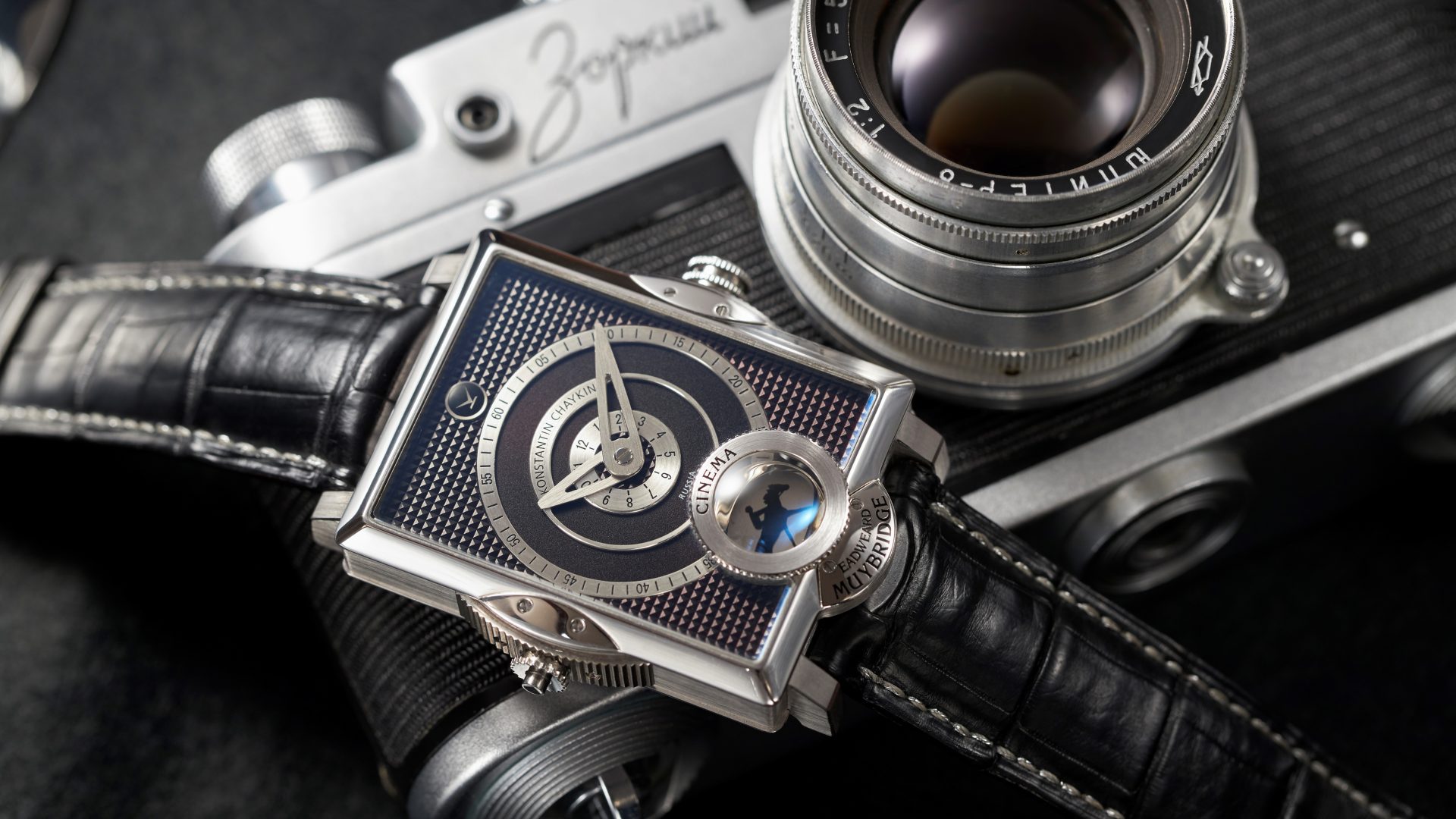
The back cover, of course, was made of sapphire glass in order not to hide the finest finishing of the rectangular manufactured caliber with a 45-hour power reserve. The black lacquered dial is intricately guilloched with the traditional “Clou de Paris” pattern.
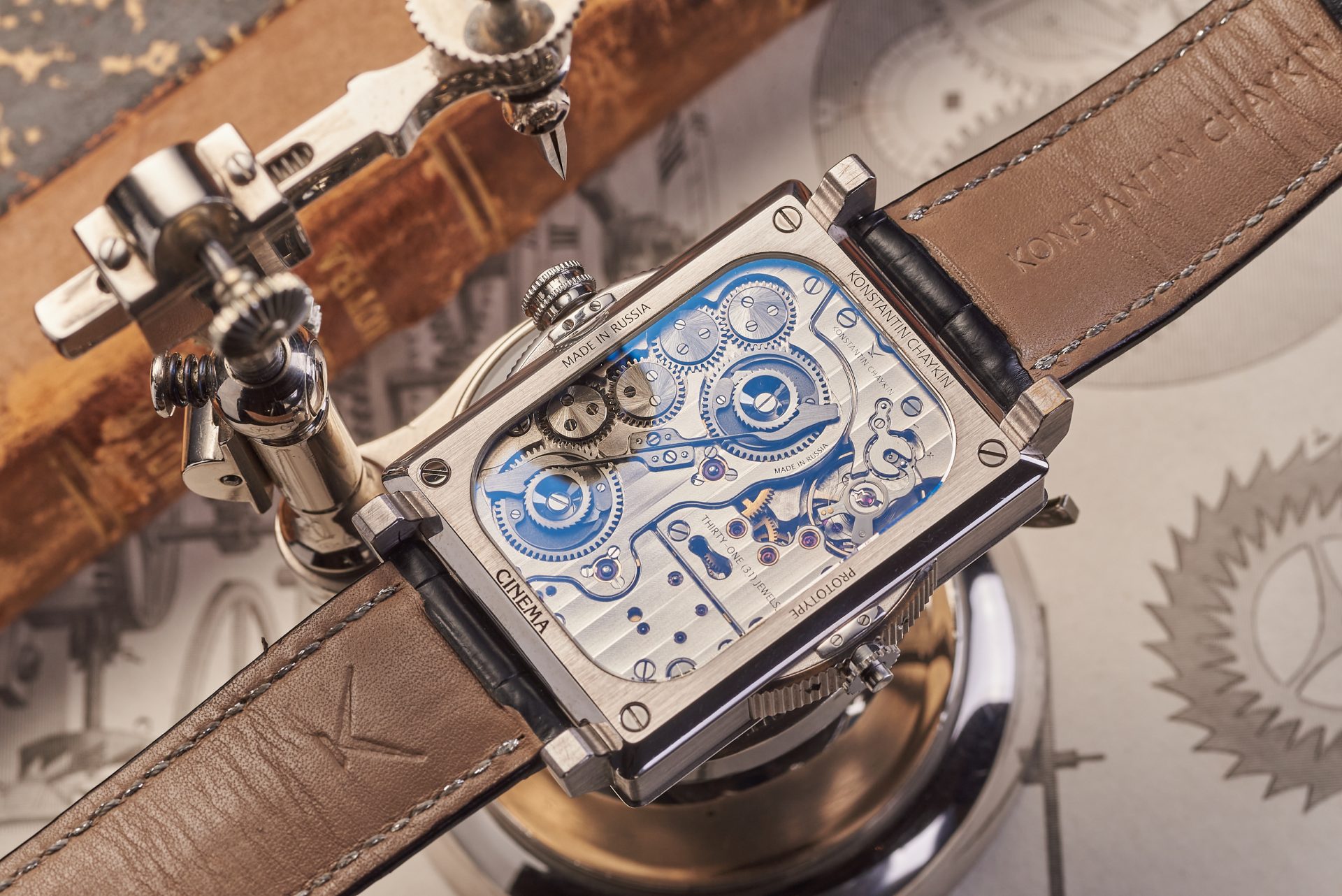
The watch was presented in Moscow on April 9, 2013, and two weeks later it caused a furore at the famous exhibition in Basel (Baselworld).
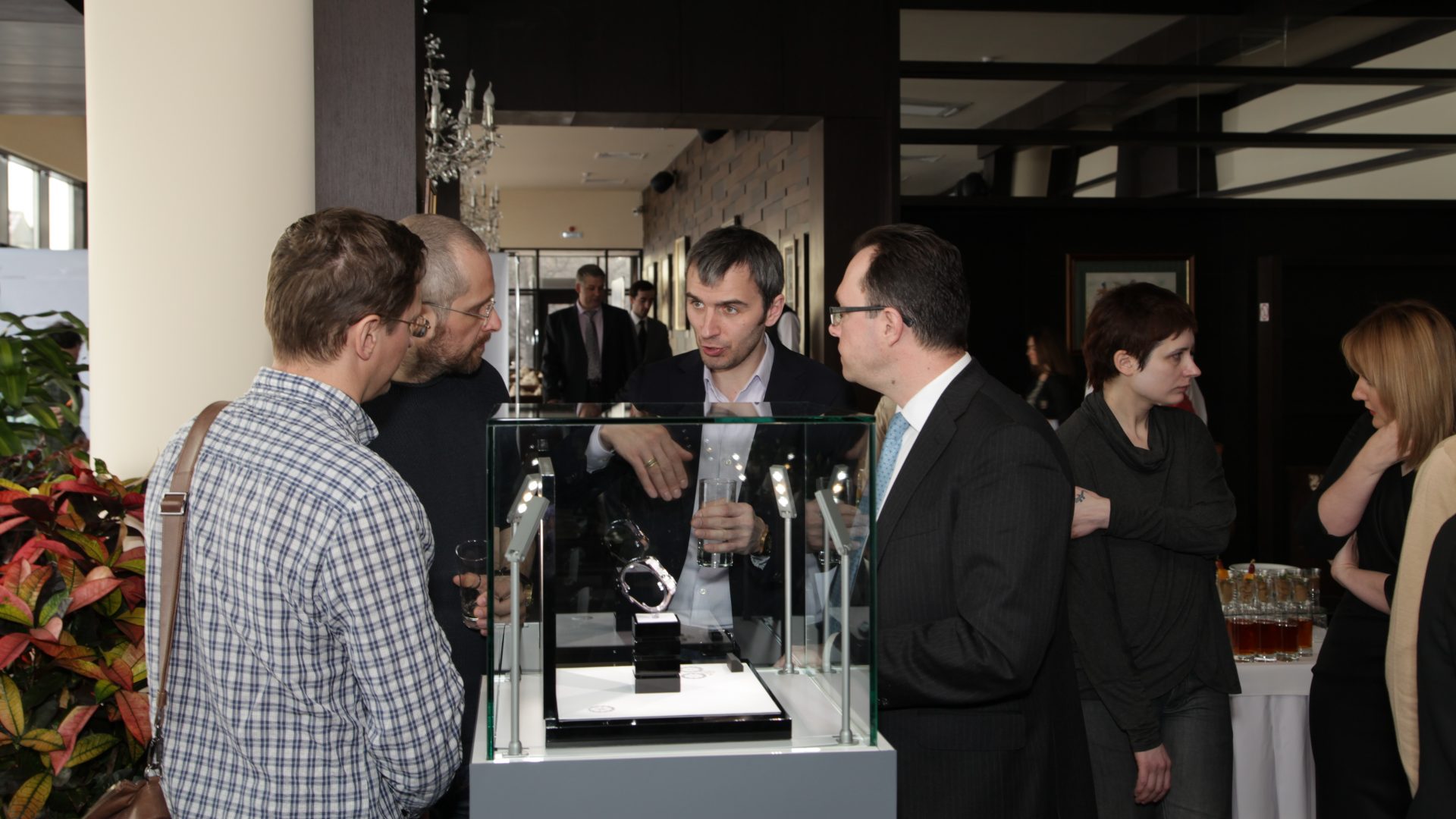
All the greatest Haute Horlogerie magazines, following the trends of the industry, were writing about the brand-new timepiece.
In an interview for thewatches.tv, Michael Clerizo, a columnist for The Wall Street Journal, mentioned that he ranked the Cinema among the top five watches presented at the Baselworld.
Chaykin’s creative potential found application not only in his ingenious invention but also in the methods the watchmaker used to spread the word. After all, none of the distinguished Swiss masters has ever used the comic book genre to talk about watches.
The Cinema watch was exceedingly empathic, and the reaction of the watchmaking connoisseurs this timepiece evoked made Chaykin think of the enormous role that genuine emotion might play. The Cinema watch became “the prologue” of the wrismons family story: later, the watchmaker brought to life the famous smiling Joker with a dial of anthropomorphic design.
“After the release of the Cinema model, I began to think about emotions and how they affect our contemporaries’ perception of a wristwatch,” — the master recalled afterwards. — “We look at a work of art as an object that evokes some kind of feelings in us. That thought eventually took shape in a timepiece which I called the Joker. You can read that watch’s spirit like an open book, no buttons needed.”
More information about the comic book Cinema here: https://chaykin.ru/shop/en/product/komiks/?v=f9308c5d0596

